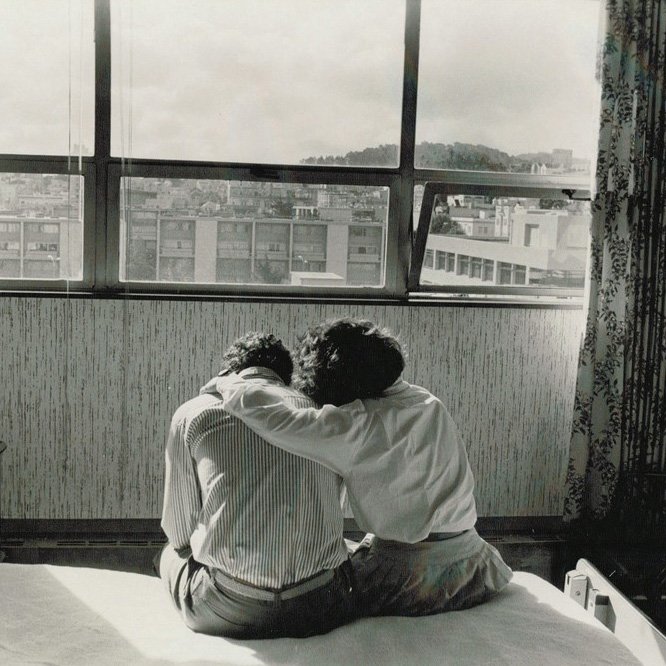AIDS at 40: From HIV to COVID-19, History of Racism Hits Communities of Color Hardest
This story is one in a series of first-person perspectives from those who are working on the frontlines to better understand, treat and prevent transmission of HIV and AIDS as well as COVID-19. You can read more about the 40 years of AIDS in SF and how it has shaped the COVID-19 response.

Antoine Johnson
It has been 40 years since the U.S. Centers for Disease Control and Prevention (CDC) published its Morbidity and Mortality Weekly Report documenting cases of pneumocystis carinii pneumonia (PCP) in five young, “previously healthy” men.
The pneumonia was later revealed and categorized as an intense symptom of the newly defined acquired immunodeficiency syndrome, otherwise known as AIDS. Generally speaking, “healthy” humans have a CD4 (or white blood cell) cell count of roughly 1,400. A cell count around 200 for people living with AIDS exposes them to an array of opportunistic infections, such as PCP, fungal infections, and cytomegalovirus, among others. The lower one’s CD4 count, the greater their risks of contracting diseases. Thus, for marginalized populations, like poor and working-class African-Americans, structural violence and health inequities impacted their CD4 counts before those infected ever contracted the virus.
Many recent reports are highlighting racism as a public health concern. Police brutality, residential segregation, underemployment, poverty, and inadequate access to health care have negative impacts on poor and working-class communities, particular low-income African-American populations.
American history shows a trend of medical and structural racism’s impact on communities of color from the AIDS crisis to the ongoing COVID-19 pandemic.
With few opportunities due to these forms of structural racism, many impoverished communities self-medicate to cope with their circumstances. From the 1970s to the 1990s, injecting heroin became an epidemic of its own in some communities. Sharing needles also was a mode of transmission for HIV/AIDS.
Rather than propose legislation helping those with drug dependence problems, America resorted to prison construction and criminalizing both drug users and sellers. Grassroots AIDS organizers were troubled by such punitive approaches, as they tried to prevent new infections in communities they served while operating on shoestring budgets.
While most of the communities with high HIV/AIDS cases from intravenous drug use were predominantly Black and Latinx, many policymakers and members of the medical community employed colorblind approaches favoring intervention among white gay communities impacted by HIV/AIDS. Decision-makers’ refusal to acknowledge or develop culturally specific harm reduction approaches have had lasting effects on low-income Black communities, as evidenced by the coronavirus (COVID-19) pandemic.
COVID-19 exposed additional forms of longstanding health inequities and structural violence. By August 2020, it was reported that Black people were less likely to have health insurance and more likely to have jobs that did not provide remote working. Thus, transporting to and from work increased their disease vulnerability. Residential segregation showed that African-Americans and Latinx folks were also more likely to multigenerational residences, which increased elders and others with preexisting health conditions’ disease exposure. These issues led the Surgeon General Vivek Murthy to declare that people of color are “socially predisposed” to COVID-19 through structural racism. Anthony Fauci, director of the National Institute of Allergy and Infectious Diseases, went a step further and elucidated how food apartheid, “access to health care and the undeniable effects of racism in our society” contribute to health inequities for Black, Latinx, and Indigenous populations.
American history shows a trend of medical and structural racism’s impact on communities of color from the AIDS crisis to the ongoing COVID-19 pandemic. To advance health equity, we must confront our racist history in society at large and in institutions like the health fields. Black faces in higher places does not mitigate these longstanding issues, as studies have shown that because of structural racism, Black people’s health continues to deteriorate despite educational and economic advancement. We can prevent low CD4 counts that increases disease susceptibility by mitigating levels of stress caused by forms of structural violence that existed before the AIDS epidemic and sadly, still exist today.
Antoine Johnson is a PhD candidate in the History of Health Sciences, UCSF Graduate Division, whose dissertation looks at HIV and AIDS among Black people in the Bay Area in the early days of the epidemic.
40 Years of AIDS in SF
Learn about UCSF’s four decades of work in HIV and AIDS, and how it has informed our response to the COVID-19 pandemic.
